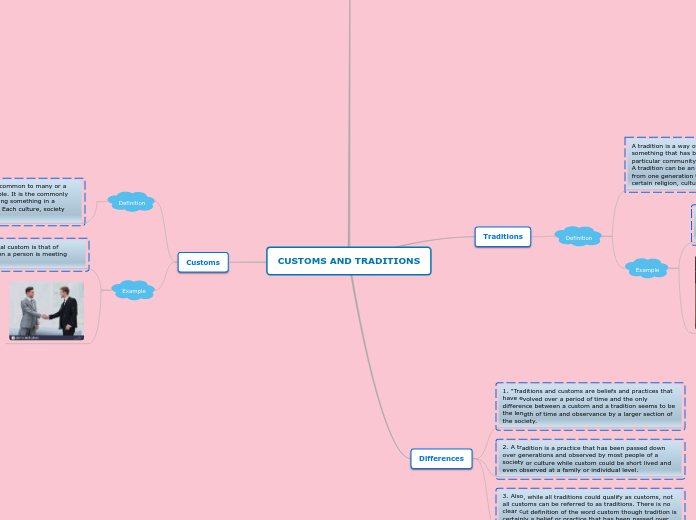Characteristics of Culture
8. Culture has both universal (etic) and distinctive (emic) elements
Although some students of culture assume that every culture is unique and in some sense every person in the world is unique, science deals with generalizations.
9. Culture is learned
Culture is learned from the people you interact with as you are socialized. Watching how adults react and talk to new babies is an excellent way to see the actual symbolic transmission of culture among people.
10. Culture is subject to gradual change
Culture changes gradually. It is not static. The forces of change are both internal and external and the mechanism of change are discovery and inventions. Most innovations introduced into a culture are the result of borrowing from other cultures. This process is known as cultural diffusion, the spreading of cultural items from one culture to another.
11. The various parts of a culture are all, to some degree, interrelated
Cultures should be thought of as integrated wholes – that is, cultures are coherent and logical systems, the parts of which to a degree are interrelated. …When we say that a culture is integrated we are saying that its components are more than a random assortment of customs.
12. Culture is a descriptive not an evaluative concept
Our notion of culture is not something exclusive to certain members; rather it relates to the whole of a society. Moreover, it is not value-laden. It is not that some cultures are advanced and some backward, some more civilised and polite while others are coarse and rude. Rather, they are similar or different to each other.
1. Culture is manifested at different layers of depth
Culture has three fundamental levels: (a) observable artifacts, (b) values, and (c) basic underlying assumptions.
a) Observable artifacts: This category includes everything from the physical layout, the dress code, the manner in which people address each other, the smell and feel of the place, its emotional intensity, and other phenomena, to the more permanent archival manifestations such as company records, products, statements of philosophy, and annual reports.
b) Values: values govern behavior. In identifying such values, we usually note that they represent accurately only the manifest or espoused values of a culture.
c) Underlying assumptions: They are typically unconscious but which actually determine how group members perceive, think and feel.
7. Culture is always both socially and psychologically distributed in a group, and so the delineation of
a culture’s features will always be fuzzy
Culture is a ‘fuzzy’ concept, in that group members are unlikely to share identical sets of attitudes, beliefs and so on, but rather show ‘family resemblances’, with the result that there is no absolute set of features that can distinguish definitively one cultural group from another.
6. Culture is both an individual construct and a social construct
Culture is as much an individual, psychological construct as it is a social construct. Our failure in the past to recognize the existence of individual differences has helped in the formation and maintenance of stereotypes.
5. Culture is associated with social groups
Culture is shared by at least two or more people. If a solitary individual thinks and behaves in a certain way, that thought or action is idiosyncratic, not cultural. For an idea, a thing, or a behavior to be considered cultural, it must be shared by some type of social group or society.
4. Culture influences biological processes
If we stop to consider it, the great majority of our conscious behavior is acquired through learning and interacting with other members of our culture. Even those responses to our purely biological needs (that is, eating, coughing, defecating) are frequently influenced by our cultures. For example, all people share a biological need for food. Unless a minimum number of calories is consumed, starvation will occur. Therefore, all people eat. But what we eat, how often, we eat, how much we eat, with whom we eat, and according to what set of rules are regulated, at least in part, by our culture.
3. Culture can be differentiated from both universal human nature and unique individual personality
Culture is learned, not inherited. It derives from one’s social environment, not from one’s genes.
2. Culture affects behaviour and interpretations of behaviour
Although certain aspects of culture are physically visible, their meaning is invisible: ‘their cultural meaning'. This could often lead to cultural misunderstandings and misinterpretations.









